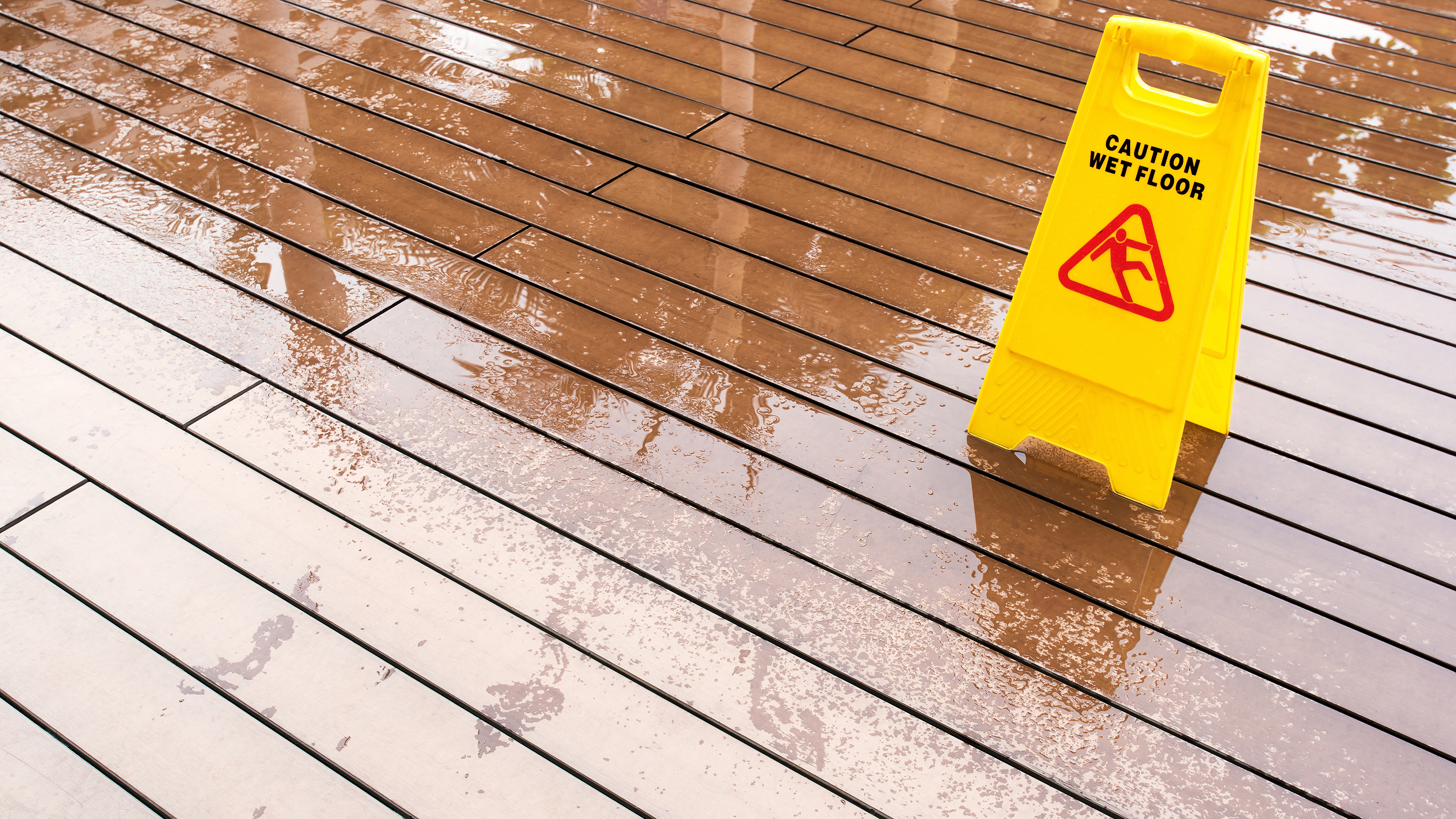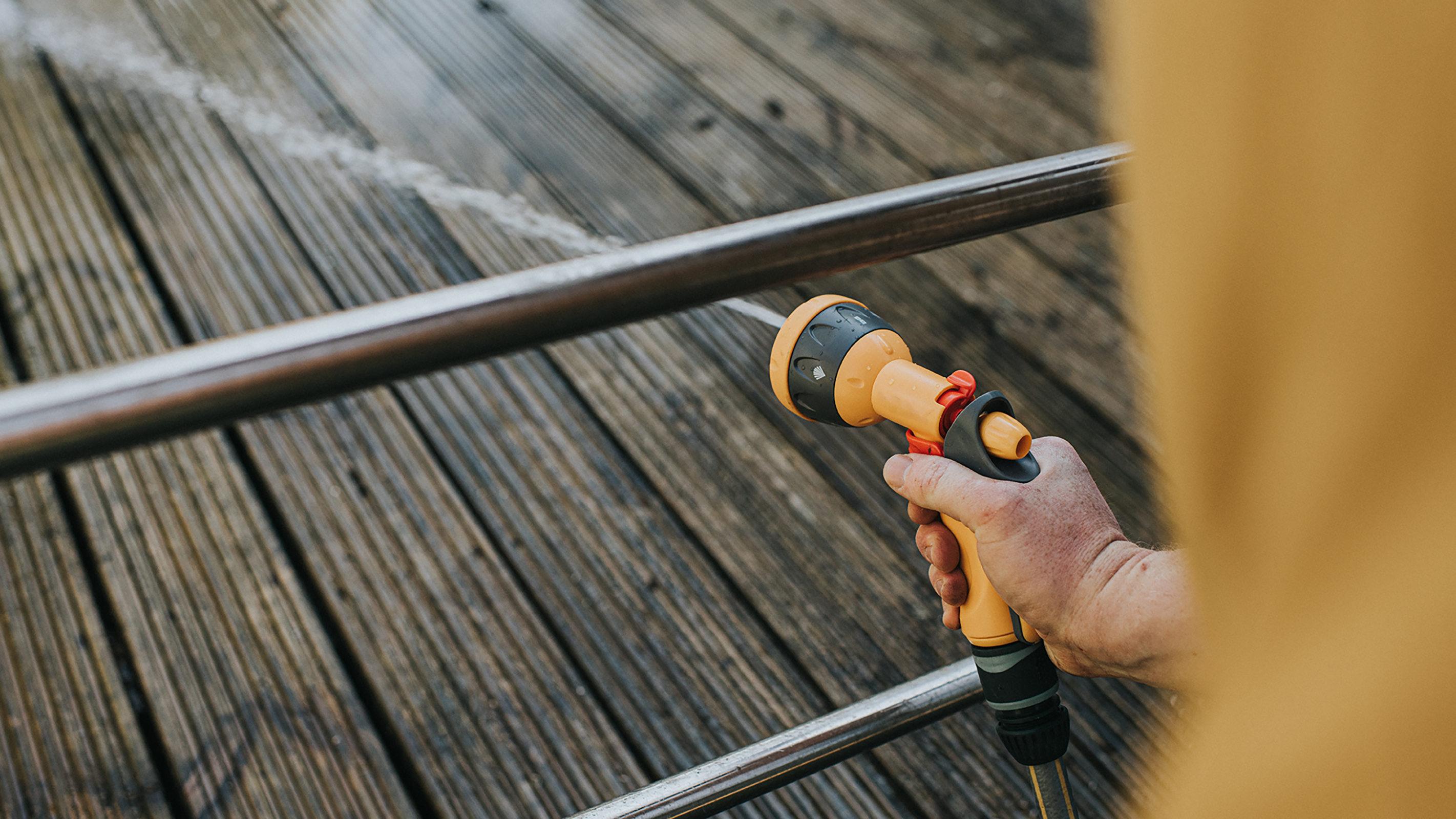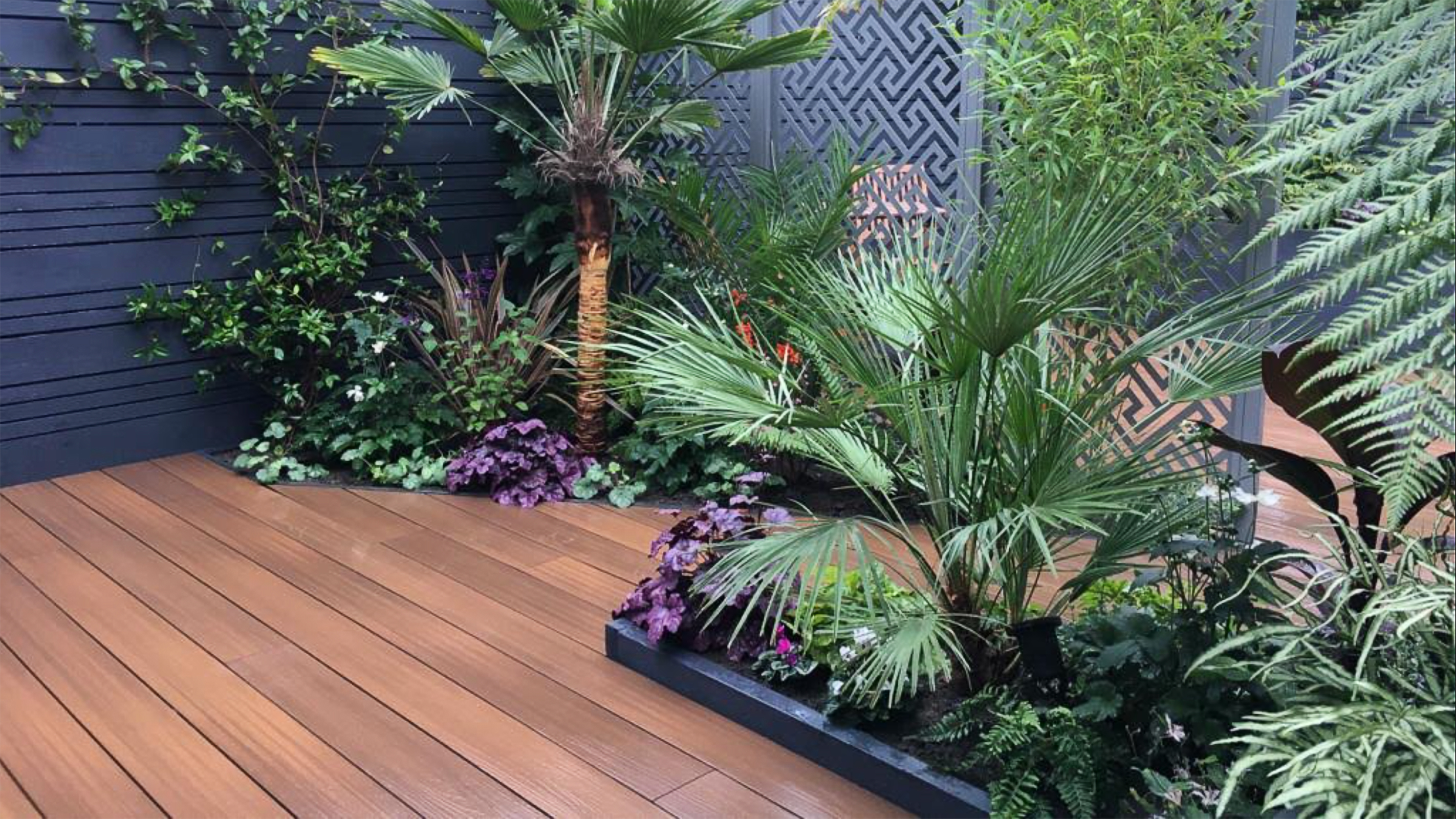How to make decking non-slip as we wave goodbye to summer
Wondering how to make decking non-slip now that autumn has arrived? We have gathered together the very best ways to prevent and treat this common problem

How to make decking non-slip — it is an issue likely to be on the minds of many people now that cooler, wetter weather has set in. Slippery decking is one of a number of issues that need to be addressed in our gardens during the cooler seasons, including protecting patio furniture and ensuring external woodwork remains in good condition.
Having gone to all the effort of designing and bringing to life your brilliant decking ideas, the last thing you want is to have to avoid it or warn others from walking on it for fear of going head over heels.
There are several things that cause slippery decking, all of which can be prevented with a little know-how. Whether you are in the process of choosing products and designing your new deck, or are already the proud owner of a stylish decked space, our top tips are here to ensure you can enjoy it, safely, all year round.
How to make decking non-slip: Choosing the right products
Before we get into how to make decking non-slip, it is important to bear in mind –particularly if you are yet to choose your decking – that some types of decking are less likely to become slippery underfoot than others.
Rather than just wait for your decking to become slippery and then deal with the problem, it makes far more sense to choose a non-slip decking in the first place.
Whether you are after composite decking ideas or prefer the idea of a timber deck, both are now available in non-slip designs. Some anti-slip decking comes pre-fitted with resin-based aggregate inserts, while other products are either made from, or are coated with, substances that prevent or inhibit the growth of algae or mould.
Non-slip decking can also feature deep grooves or some other ingrained surface pattern that will prove to be less slippery than that with a completely smooth surface.
Whatever decking you choose, ensure it has good drainage. Fitting the boards so that water can run off will prevent water from pooling.
"Keep the gaps or spaces between the boards clean to allow water to flow to the ground easily," says Allan Jeffrey, Managing Director at Ultra Decking. "Pooling of water on the deck surface can serve as a breeding ground for mould and algae."
Even choosing a non-slip decking does not always ensure that it won't become a little slimy and unsafe underfoot. Take a look at our top ways to deal with a deck that is proving a little perilous.
1. Keep decking as clean as possible
Keeping your deck clean and free from debris, such as fallen leaves, is absolutely vital if you want to prevent it from becoming slippery underfoot. Knowing how to clean decking is also an important element in prolonging its life.
Both timber and composite decking should be kept spotless if you want it to be safe to walk on. "The main reason decking becomes slippery is the growth of mould and fungus," says Allan Jeffrey. "While these can’t naturally grow on composite decking, they do grow on fallen leaves, pollen, and debris."
If there is not too much dirt on your decking, a solution of slightly soapy water and a sponge might be all that is required. However, if the dirt is a little more set in, using a kitchen scourer along the grain might be necessary.
Pressure washers can also come in handy here, but be sure to do you research on the best pressure washers for the job to ensure you don't cause any damage to the surface of the deck.

2. Coat it with an anti-slip covering
There are various treatments for decking designed to make them anti-slip. These include oils, paints and stains, all of which should be applied according to the manufacturer's instructions. Most of these products contain tiny particles that add an abrasive quality to the decking.
Do bear in mind that some will be better than others and, in the case of paints and stains in particular, will need to be regularly reapplied — take time to research the best decking paints around before parting with any money.
Note that some oils and stains of this type will only be suitable for use on timber decking — if you want to use a product such as this to prevent composite decking from becoming slippery you should first check with the supplier that it will not cause any damage. In any case, many composite products are supplied with anti-slip coatings pre-applied.

3. Apply gripping strips
A popular way to ensure decking stays non-slip is to use anti-slip decking tape or strips with an abrasive surface. Although tape can be very effective, abrasive decking strips tend to be a more permanent solution as they are designed to be screwed to the decking boards as opposed to stuck on.
That said, if you are looking for a very quick and cost-effective way to stop your deck becoming an ice-rink, tape is a good solution — be sure only to apply this kind of tape to a scrupulously clean deck and choose a dry, sunny day.
Gripping strips are often designed to sit within the grooves of decking so be sure to check that the product you choose is the correct width for your style of decking.
4. Pay attention to the direction of your decking
If you have chosen grooved decking boards, the direction in which they are laid and fixed is really important when it comes to preventing them from becoming slippery.
"Decking boards should be installed with the grooves running in the opposite direction to the most frequent way you walk over it," says Leigh Barnes of Jacksons Fencing. Laying it in this way makes the most of its ribbed texture when it comes to ensuring it doesn't becoming slippery.
5. Fit a cover over your deck
Using a cover over your deck is a really good way to prevent leaves and debris from falling on it, as well as preventing water from pooling here.
Take a look at the various patio cover ideas out there, including awning and pergolas. Canvas sails and gazebos are another good option but consider how well they will fare in high winds and very wet or cold weather — you don't want have to be taking them in just when you need them the most.
6. Try this paint hack
Painting decking is a low-cost and effective way of transforming its appearance as well as prolonging its life. For a low cost way to make an existing deck less slippery, you could try this simple (and widely used) paint hack: Just add sand to paint or stain.
Ensure the deck is dry and clean before combining four parts paint to one part sand and stir until it is completely mixed in. You can then apply with either a brush or roller. A final coat of paint will mask the appearance of the sand.
Although this is a very handy and easy solution to a slippery deck, be aware that it is not necessarily the best long-term solution.
...and finally — skip the chicken wire!
Although fitting chicken wire to a deck to make it anti-slip was once an idea that was often recommended, it really should be avoided — you really don't want to go forking out on decking costs only to ruin it.
Not only does fixing chicken wire to decking boards simply provide another spot for dirt to become lodged, but should it come loose (which it inevitably will over time) it can become a dangerous tripping hazard. Sharp sections of wire sticking up could also injure pets and wildlife — as well as bare-footed garden guests.
Get the Homebuilding & Renovating Newsletter
Bring your dream home to life with expert advice, how to guides and design inspiration. Sign up for our newsletter and get two free tickets to a Homebuilding & Renovating Show near you.
Natasha was Homebuilding & Renovating’s Associate Content Editor and was a member of the Homebuilding team for over two decades. In her role on Homebuilding & Renovating she imparted her knowledge on a wide range of renovation topics, from window condensation to renovating bathrooms, to removing walls and adding an extension. She continues to write for Homebuilding on these topics, and more. An experienced journalist and renovation expert, she also writes for a number of other homes titles, including Homes & Gardens and Ideal Homes. Over the years Natasha has renovated and carried out a side extension to a Victorian terrace. She is currently living in the rural Edwardian cottage she renovated and extended on a largely DIY basis, living on site for the duration of the project.

